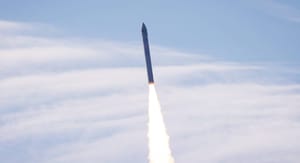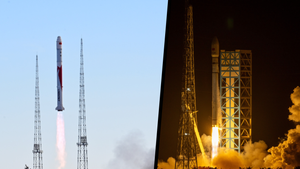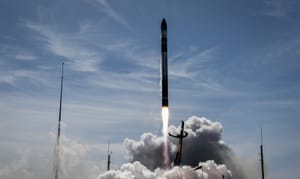
Very recently, the Federal Aviation Administration granted SpaceX a launch license for its Starship-Super Heavy launch vehicle. This comes almost seven months after the first launch attempt of SpaceX's currently in development fully reusable orbital launch system. The issuing of the launch license also comes a few hours after the United States Fish and Wildlife Service concluded its investigation into the deluge system underneath the rocket meant to protect the launch site from the full thrust of the Super Heavy booster.
SpaceX is also believed to have made several changes to the Starship-Super Heavy vehicle, they are; a switch from hydraulic to electric thrust vector control, the addition of the hot-staging ring atop of the booster, increased fire suppression systems in the aft end of the Super Heavy booster, and an improved flight termination system.
As of writing SpaceX is believed to be restacking Ship 25 atop of Booster 9 for the final time.
The current schedule for IFT-2 is as follows, all times are approximate and assumes everything goes according to plan;
| T-02:00:00 | SpaceX Flight Director conducts poll and verifies GO for propellant load |
| T-01:37:00 | Booster LOX (liquid oxygen) load underway |
| T-01:37:00 | Booster fuel load (liquid methane) underway |
| T-01:17:00 | Ship fuel load (liquid methane) underway |
| T-01:13:00 | Ship LOX load underway |
| T-00:19:40 | Raptor begins engine chill on booster and ship |
| T-00:00:10 | Flame deflector activation |
| T-00:00:03 | Raptor ignition sequence begins |
| T-00:00:00 | Excitement guaranteed |
| T+00:00:02 | Liftoff |
| T+00:00:52 | Max Q (moment of peak mechanical stress on the rocket) |
| T+00:02:39 | Booster MECO (most engines cut off) |
| T+00:02:41 | Hot-staging (Starship Raptor ignition and stage separation) |
| T+00:02:53 | Booster boostback burn startup |
| T+00:03:47 | Booster boostback burn shutdown |
| T+00:06:18 | Booster is transonic |
| T+00:06:30 | Booster landing burn startup |
| T+00:06:48 | Booster landing burn shutdown |
| T+00:08:33 | Starship engine cutoff |
| T+01:17:21 | Starship entry |
| T+01:28:43 | Starship is transonic |
| T+01:30:00 | An exciting landing! |

What is Starship-Super Heavy?
Starship-Super Heavy is SpaceX's in-development fully reusable super heavy-lift launch vehicle. SpaceX is currently aiming to have the launch vehicle deliver one hundred and fifty tons to low Earth orbit while reused or two hundred and fifty tons when expended.
Starship is the second stage of the Starship-Super Heavy launch vehicle and is planned to be reused. The Starship second stage is fifty meters tall and nine meters wide. The second stage is powered by three sea-level Raptor engines and three vacuum Raptor Engines with plans to increase it to six in the future, these engines burn liquid methane and liquid oxygen with a maximum thrust of 1500 tons. Starship is believed to weigh one hundred tons empty and one thousand three hundred tons fully fuelled. For reusability, Starship will separate from the booster, Super Heavy, in flight and continue up toward orbit. After a few orbits Starship will perform a deorbit burn and re-enter the atmosphere, after re-entry, Starship will aim to land on the chopsticks' of the launch tower, also called Mechazilla.
Super Heavy is the first stage booster for the Starship-Super Heavy launch vehicle and is planned to be reused, it is also currently the most powerful rocket stage ever flown. The Super Heavy booster is seventy-one meters tall and nine meters wide. The booster is powered by thirty-three Raptor engines burning liquid methane and liquid oxygen with a maximum thrust of 7590 tons. Super Heavy is believed to weigh two hundred tons empty and three thousand six hundred tons fully fuelled. For reusability, Super Heavy will launch from the Orbital Launch Mount and will then perform a boost back burn and land on the 'chopsticks' of the launch tower, also called Mechazilla, using its grid fins at the top for greater aerodynamic control during unpowered flight. Super Heavy also has a hot-staging ring atop of it to improve the performance of the Starship-Super Heavy stack and simplify the staging process.



